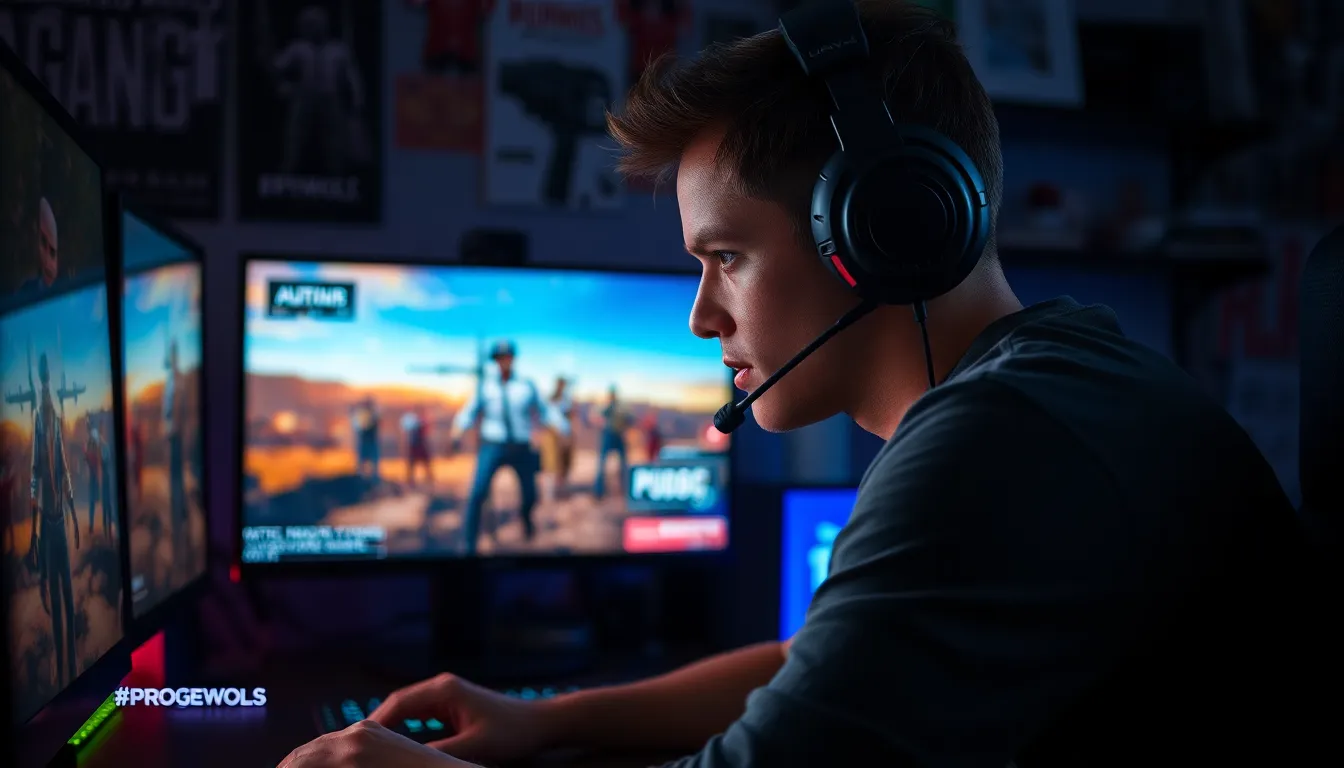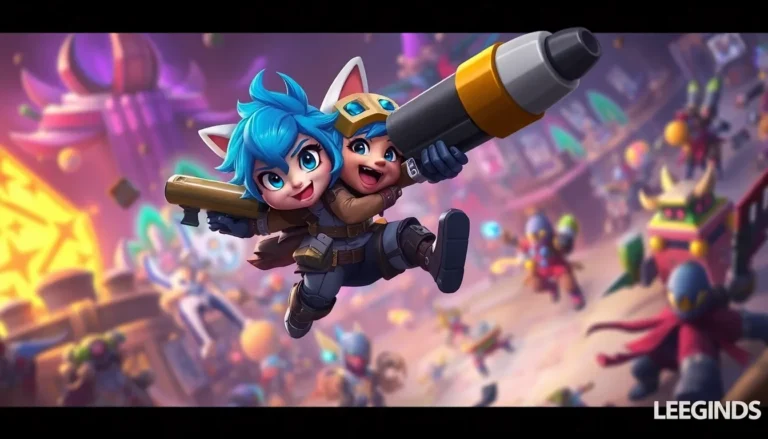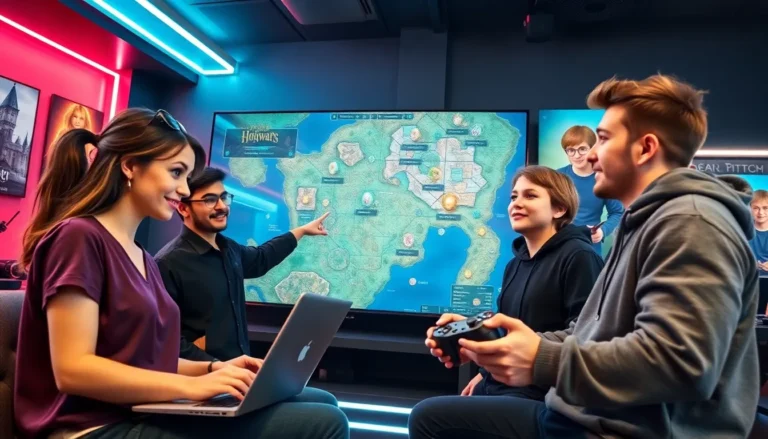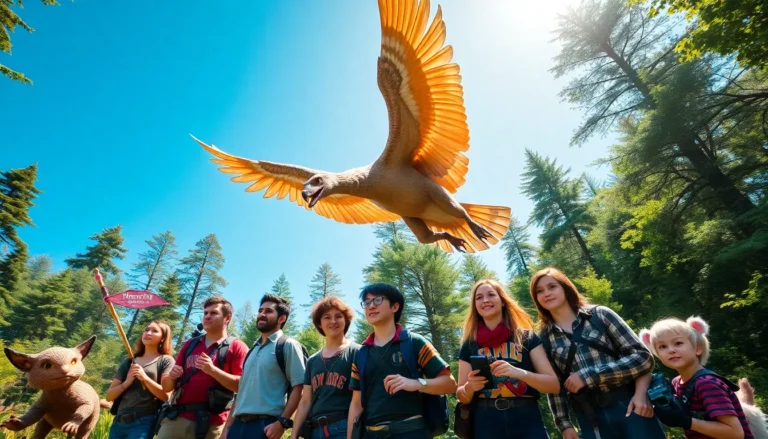In the chaotic battlegrounds of PUBG, teamwork isn’t just a strategy; it’s a survival instinct. Imagine your squad as a finely tuned machine, each member playing a crucial role in outsmarting opponents and snatching that coveted chicken dinner. Whether you’re the fearless leader charging into battle or the eagle-eyed sniper perched on a distant hill, mastering squad tactics can turn the tide of any match.
Table of Contents
ToggleOverview of PUBG Squad Tactics
Understanding squad tactics in PUBG enhances gameplay and promotes success. Team composition plays a critical role; a balanced mix of support, offense, and scouting improves efficiency. Each player should adopt a specific role based on their skill set, ensuring versatility during engagements.
Effective communication forms the backbone of successful squads. Utilizing voice chat or quick commands keeps everyone on the same page. Sharing information about enemy locations, loot, and health status builds trust and coordination among teammates.
Positioning impacts the effectiveness of engagements. During firefights, players should utilize cover and maintain advantageous angles. Flanking maneuvers disrupt enemy formations and create openings for attacks. Additionally, coordinating movements ensures that teammates can provide quick support when needed.
Looting strategies affect overall performance in matches. Prioritizing essential items such as health kits, ammo, and armor increases survival chances. Players should designate specific areas for looting to maintain efficiency and reduce risks.
Engaging in fights requires a strategic approach. Choosing when to engage or retreat can determine the squad’s survival. Focusing on high-ground advantages provides visibility and potential cover during conflicts.
Revival mechanics offer crucial opportunities for squads facing heavy opposition. Enemies may overlook downed teammates, allowing for strategic revives in hidden locations. Planning ahead for potential revivals can shift the tide in close matches.
Adapting tactics to the changing dynamics of the game is essential. Different terrains demand unique approaches and strategies tailored to each new situation. As players become more accustomed to various maps, their tactical proficiency grows, leading to improved performance in squads.
Importance of Team Coordination
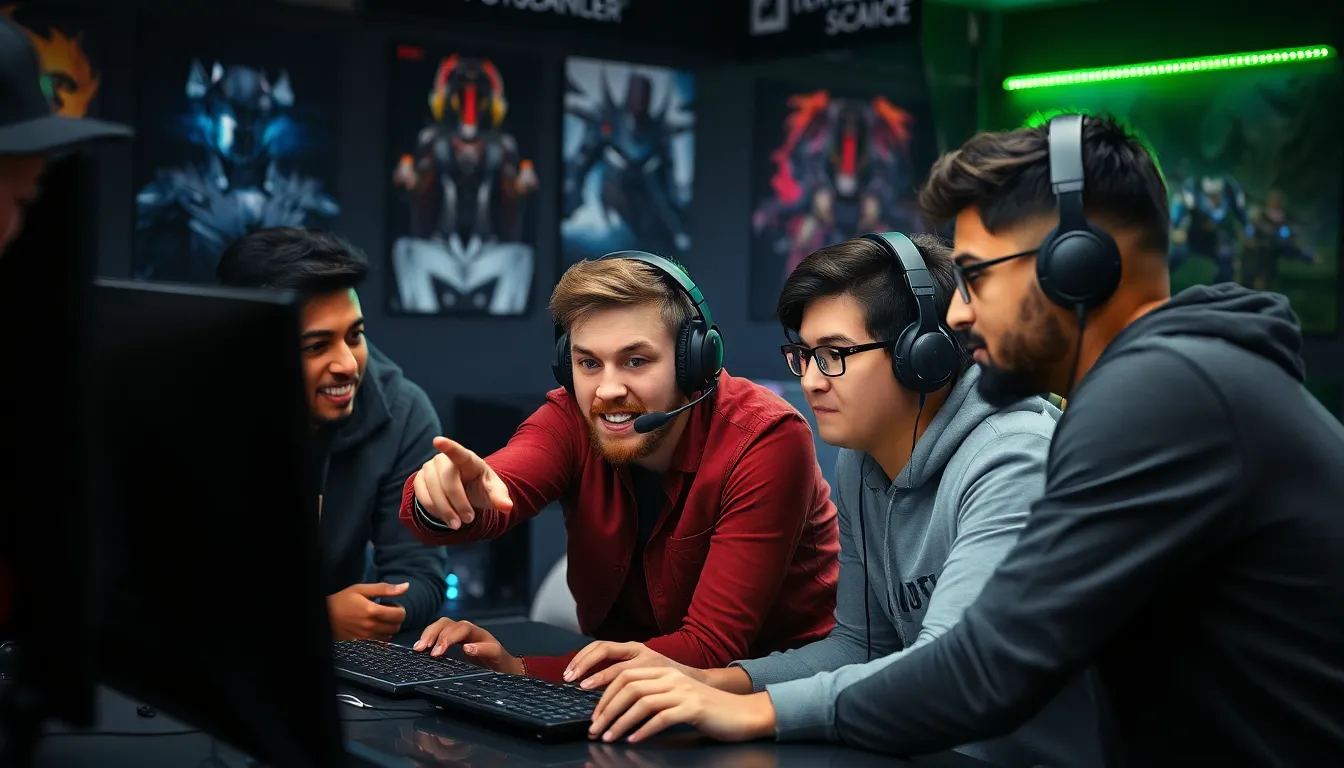
Team coordination plays a pivotal role in achieving success in PUBG. Effective teamwork fosters a cohesive unit capable of overcoming challenges.
Communicating Effectively
Effective communication serves as the backbone of a successful squad. Utilizing voice chat facilitates real-time discussions about enemy positions and strategy adjustments. Quick commands help convey essential information, such as when to regroup or shift positions. Players should practice clear and concise language to avoid confusion during high-pressure situations. Regularly sharing health status and ammunition counts allows for better resource management. Establishing a system for calling out threats ensures that critical information reaches all team members swiftly.
Role Assignment
Assigning specific roles enhances squad efficiency. Ratios based on player strengths help create a balanced team. Designating one player as the leader streamlines decision-making processes. Another member can focus on sniping from a distance, providing cover for teammates. Support roles may offer healing items, ensuring survival during engagements. Scouting positions should be filled with perceptive players who gather valuable intel on enemy movements. Adapting roles to match individual skills reinforces the overall squad dynamic, leading to greater chances of victory.
Tactical Approaches for Different Scenarios
Various scenarios in PUBG demand distinct tactical approaches from squads. Recognizing when to execute specific strategies can significantly impact gameplay.
Early Game Strategies
In early-game scenarios, teams should prioritize securing weapons and supplies. Choosing a landing area away from high-traffic zones often ensures better loot without immediate threats. Soon after landing, members should communicate quickly about item availability to maximize efficiency. Establishing a loot rotation further ensures that each squad member gathers essential items. Using vehicles can expedite movement to safer zones while scouting for enemy positions. Emphasizing teamwork during this stage sets a strong foundation for the match.
Mid-Game Positioning
Mid-game demands effective positioning to control the battlefield. Squads should focus on advantageous locations, such as high ground or buildings, to establish sight lines. Covering each other during movement strengthens overall defense against ambushes. Members need to adapt their strategies based on the shrinking play zone, making timely decisions about when to engage or disengage. Keeping track of enemy movements enhances situational awareness, allowing squads to capitalize on opponent mistakes. Effective use of grenades or other throwables in this phase can shift the momentum in their favor.
Late Game Decision Making
Late-game decisions play a crucial role in determining victory or defeat. Maintaining composure during intense firefights is essential, as panic leads to mistakes. Prioritizing survivor revival techniques can turn the tide in team engagements, particularly when numbers dwindle. Assessing remaining safe zones requires careful planning and positioning to dominate the final encounters. Clear communication about enemy positions, health statuses, and tactical plans increases chances of success. Utilizing smoke grenades to obscure visibility can facilitate strategic movements during critical moments.
Utilizing Terrain and Cover
The effective use of terrain and cover significantly enhances squad tactics in PUBG. Players maximize their chances of survival by understanding the game maps and utilizing available natural features.
Understanding Maps
Maps provide critical insights into terrain advantages. Knowledge of each map’s layout, key locations, and resource hotspots shapes a squad’s strategy. Players identify choke points and high-ground areas that offer extensive visibility while minimizing enemy threats. Familiarity with popular landing zones helps squads secure essential gear quickly. Moreover, understanding the blue zone’s behavior positions squads to avoid danger effectively. Players who analyze map features can navigate efficiently, adjusting their strategies in real-time.
Using Natural Cover
Natural cover includes trees, rocks, and buildings that shield players from enemy fire. Staying close to these structures reduces exposure, enabling effective positioning during firefights. Squads utilize natural cover to establish ambush locations and create defensive barriers. Taking advantage of elevation changes allows players to spot enemies while remaining concealed. Additionally, players should rotate between cover spots to confuse opponents and prevent them from anticipating movements. Harnessing these elements increases a squad’s tactical advantage, making them formidable opponents in any engagement.
Engaging Enemies
Engaging enemies effectively requires strategic planning and execution. Successfully maneuvering around opponents often dictates the outcome of encounters.
Flanking and Ambushing
Flanking positions disrupt enemy lines by attacking from unexpected sides. Completing these maneuvers often catches opponents off guard. Utilizing natural cover during approach enhances stealth, allowing squads to close in undetected. When setting ambushes, setting up in high-traffic areas increases the likelihood of enemy encounters. Coordinate with squad members to create a pincer move; this approach surrounds enemies, maximizing damage while minimizing personal risk. Communicating intentions clearly and quickly can enhance the effectiveness of these tactics, enabling quick transitions into attack.
Retreating and Regrouping
Regrouping remains crucial after intense engagements, especially after sustaining injuries. Prioritize withdrawing from direct confrontation when squad members are low on health or ammunition. Establish predetermined safe zones to retreat to, facilitating swift regrouping. Taking cover during retreat routes minimizes exposure to enemy fire. Once in a safe area, quickly assess health and ammunition status for team members; this assessment shapes the next course of action. Developing a structured method for regrouping enhances overall cohesion and prepares squads for subsequent encounters.
Mastering squad tactics in PUBG is essential for achieving victory in the game. The synergy between team members creates a powerful force that can navigate the challenges of each match. By focusing on effective communication and strategic positioning, squads can outmaneuver their opponents and secure critical wins.
Understanding the dynamics of each game phase allows players to adapt their strategies accordingly. Whether it’s early-game looting or late-game decision-making, a well-coordinated team can capitalize on opportunities and turn the tide of battle.
Ultimately, continuous practice and a commitment to teamwork will elevate a squad’s performance, making them formidable contenders in the ever-evolving landscape of PUBG.

